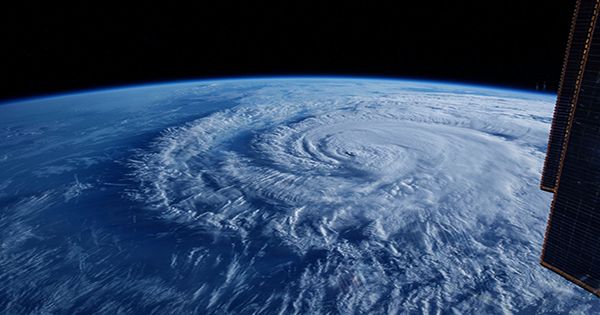Above the Pacific Ocean in 2018, the top of a massive thunderstorm sank to -111°C (-167.8°F) in the coldest temperature ever recorded, making it the coldest storm cloud temperature ever recorded. The temperature was eclipsed by a satellite on December 29, 2018, when it flowed over a strong thunderstorm about 400 kilometers (248 miles) south of the island nation of Nauru in the southwestern Pacific Ocean.
In a new study published in the journal Geophysical Research Letters, scientists at the UK’s National Center for Earth Observations explain how this record-low cloud temperature came about. The temperature in the Earth’s atmosphere usually decreases as you go. In the lowest segment of the Earth’s atmosphere, the troposphere, air temperatures can reach as low as -90°C (-130°F) in the tropics. Storms usually reside within the troposphere and can reach an altitude of 18 kilometers (11 miles) above sea level.
As they gain height, they lengthen and lengthen before the top of the cloud spreads out and the high winds flatten the upper part of the cloud to a lower size. These are known as cumulonimbus clouds, the only cloud type that can produce hail, thunderstorms and lightning. However, strong storms are able to hit the next layer in the atmosphere through this layer and rise into the stratosphere. Known as the overshooting top, this dome-like protrusion at the lower level can descend even at low temperatures.
In the case of this record-smart thunderstorm in 2018, the tops of the clouds reached an altitude of 20.5 kilometers (12.8 miles) above sea level, plunging their tips into just 111°C (-167.8 °F) was also documented by sensors. Dr. Simon Proud, study author and research fellow at the Department of Physics and the National Centre for Earth Observation, said in a statement, “This storm has achieved an unprecedented temperature that pushes to the limitations of what current satellite sensors are capable of measuring.”
Worryingly, scientists have been seeing more of these super-cold superstorms in recent years. Climate change may seem suspicious, but researchers are still unsure what drives this worrying trend. “We’ve discovered that these real cold temperatures are becoming more common – with the same amount of very cold temperatures over the last 3 years as they did 13 years ago,” he said. Prob. “This is important because the trend is more extreme with cold clouds and windy weather, and hail, thunderstorms, and wind are more dangerous for humans on the ground.
We now need to understand whether this change is due to our changing climate or whether it is due to the ‘perfect storm of weather conditions that have caused the most severe storm surges in the last few years.















